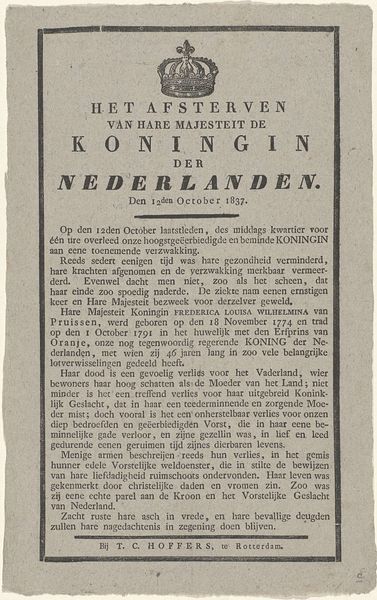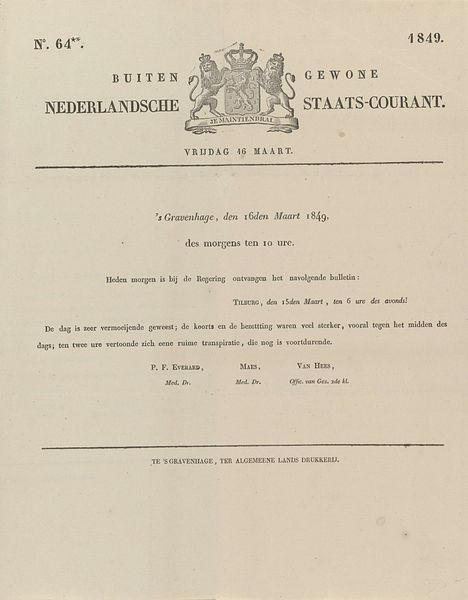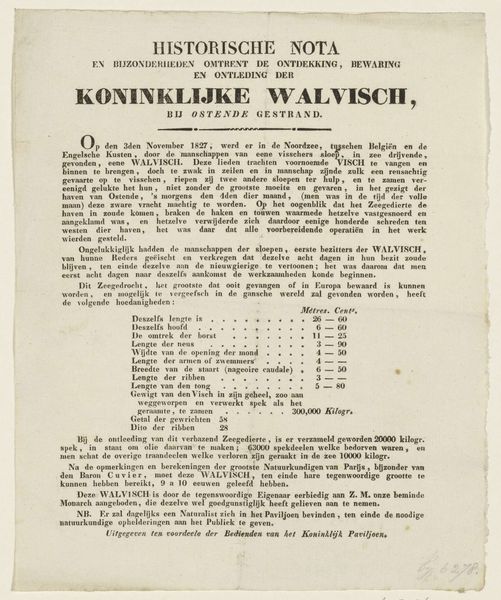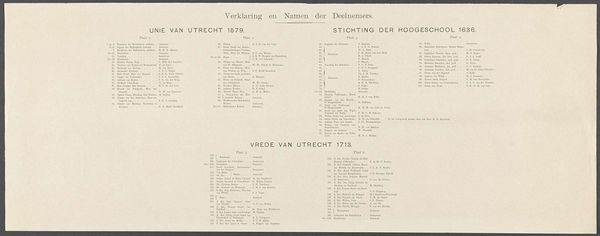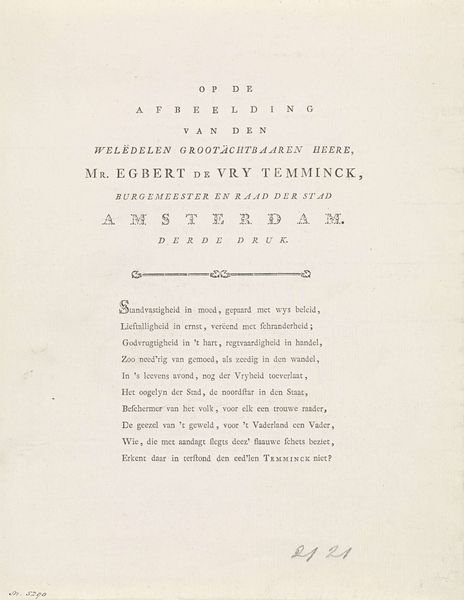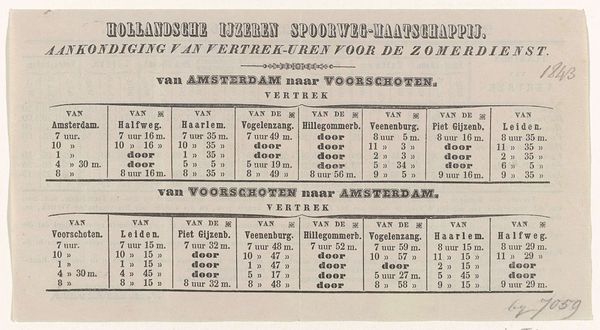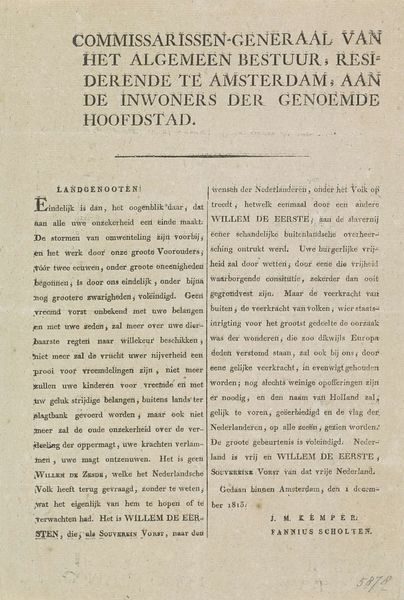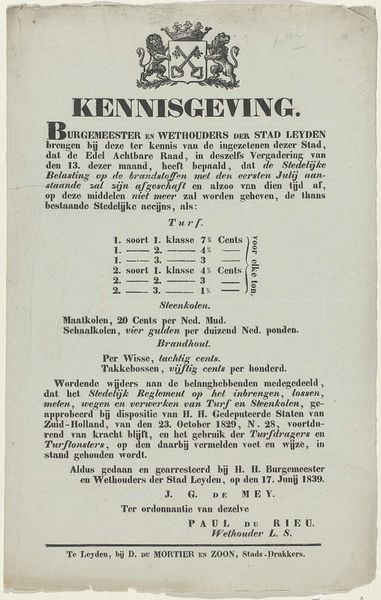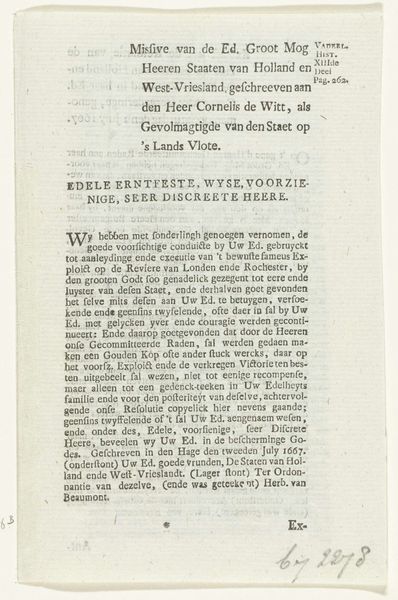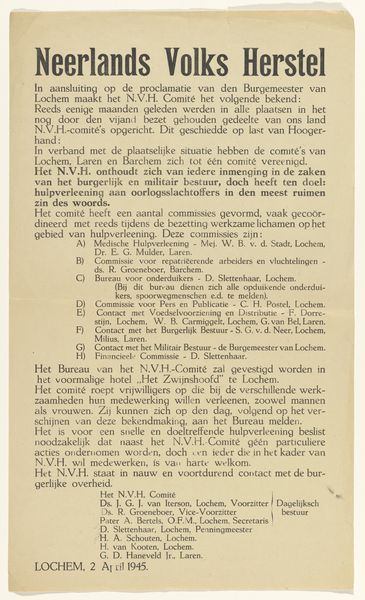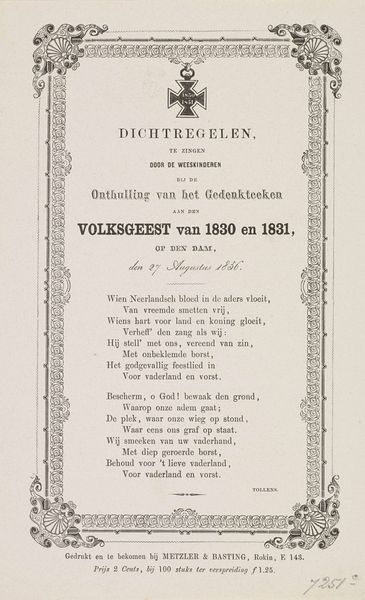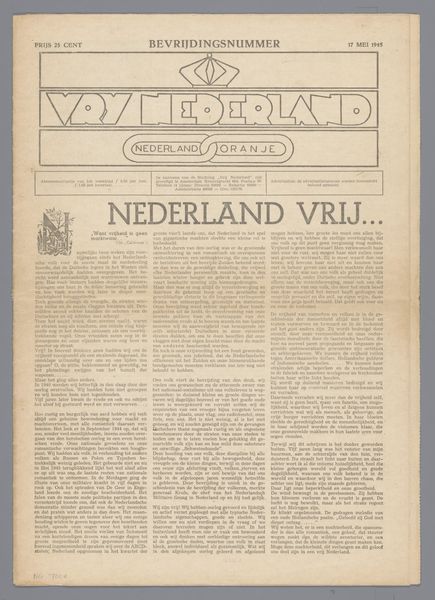
Intekenlijst behorende biij het portret van Willem I Frederik (koning der Nederlanden) 1814 - 1843
0:00
0:00
graphic-art, print, typography, engraving
#
graphic-art
# print
#
typography
#
hand-drawn typeface
#
stylized text
#
thick font
#
history-painting
#
engraving
#
small lettering
Dimensions: height 333 mm, width 220 mm
Copyright: Rijks Museum: Open Domain
Curator: Let’s discuss this… well, it’s less an artwork and more a prospectus, “Intekenlijst behorende bij het portret van Willem I Frederik (koning der Nederlanden).” Editor: Right away, I notice its austere beauty, a study in typography. It evokes a time of proclamations and formal announcements. The dense text and varied fonts create a compelling visual texture. Curator: Indeed. Produced sometime between 1814 and 1843 by Evert Maaskamp, this print served as an advertisement for an engraving of King William I by W. van Senus. It’s essentially a sign-up sheet. Editor: So, the lettering is paramount. See how "Willem" dominates, those large, serifed letters projecting authority? It's fascinating how the typeface shifts below, becoming smaller, more practical for detailing subscription levels. This suggests a stratified society, visually represented. Curator: Note also the sun motif. Positioned above the sovereign’s name, it invokes images of royalty, prosperity, and perhaps, divine right. Consider the implications of using these symbols during a period of nation-building after French occupation. Editor: Exactly, the choice of ornamentation seems deliberate. The crown, the Dutch weapons… these images speak volumes about national identity and pride, appealing directly to the public's sense of patriotism to encourage them to subscribe. It’s cultural messaging presented with clear economic intent. Curator: The materiality too interests me; the clean lines of the engraving juxtaposed with the almost frantic quality of the small, tightly packed letters that make up the subscription prices and details. An attempt to democratize the image while controlling it with form. Editor: So, beyond the formal structure and considered arrangement, the piece reflects both political intent and financial strategy. Curator: Agreed. I find this intersection of art and commerce, state and citizen, fascinating in this piece. Editor: It’s interesting how such a functional object can offer insights into both the aesthetic and social values of the period.
Comments
No comments
Be the first to comment and join the conversation on the ultimate creative platform.
